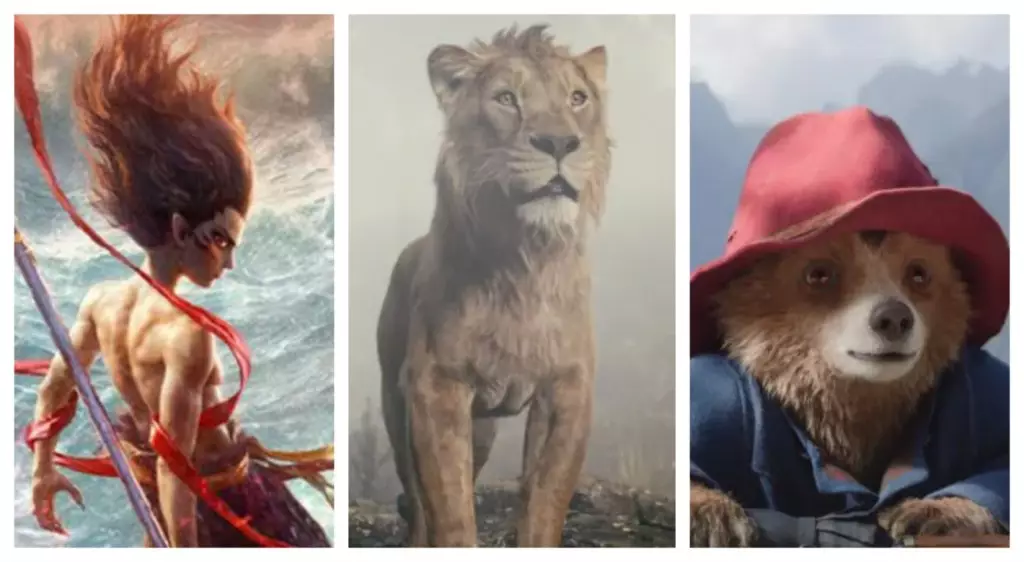The cinematic landscape is currently experiencing a seismic shift, particularly with the extraordinary success of “Ne Zha 2,” which has rewritten records and expectations. As the first film to surpass the monumental $1 billion mark in a single territory—China—Ne Zha 2 stands as a testament to the growing influence of Chinese cinema on the global stage. This achievement not only signals a resurgence in the animated film genre but also indicates a broader transformation within the international box office dynamics.
Latest figures from Maoyan indicate that “Ne Zha 2” has grossed a staggering RMB 8 billion (approximately $1.1 billion) within China. This ambitious sequel has now earned its place among the highest-grossing animated films globally, currently sitting at the seventh position. But projections are climbing, with estimates suggesting a potential RMB 12 billion ($1.65 billion) by the end of its run. If “Ne Zha 2” reaches this forecast, it would elevate the film to the rank of the second highest-earning animated feature worldwide and the 11th overall, leaving audiences and industry experts eager to see how this narrative unfolds.
The striking aspect of this achievement is that it has been accomplished without any significant box office support from markets outside of China, where the film is set for release in the coming weeks. This distinction could pave the way for “Ne Zha 2” to become a dominant player in the international arena, challenging the traditional supremacy of Western animated films.
The allure of “Ne Zha 2” goes beyond mere box office numbers; it taps into cultural narratives and artistry that resonate deeply with Chinese audiences. The film blends mythology, vibrant animation, and a relatable protagonist in Ne Zha, making it both a work of art and a cultural phenomenon. Its ability to engage with audiences on both emotional and visual levels contributes to its sustained success. As a result, the film represents not just a commercial victory but also a cultural milestone.
Furthermore, the film’s worldwide rollout—including a planned release in the U.S.—suggests an intentional strategy to capitalize on its domestic success and amplify it on the global stage. This approach reflects a growing confidence among Chinese filmmakers to engage with international audiences while remaining rooted in their unique narratives.
While “Ne Zha 2” has undoubtedly captured the limelight, Hollywood continues to hold its ground with established franchises. Disney’s recent release “Mufasa: The Lion King” remains a critical player in the international box office, having amassed $671.1 million globally, with strong showings in key international markets. The film’s ability to maintain a steady revenue stream in regions such as Brazil, Spain, and France illustrates the competitive nature of the animated film segment.
As various Hollywood titles enter their final weeks in theaters, anticipation builds for upcoming major releases such as Disney/Marvel’s “Captain America: Brave New World.” Such films represent the duality of the animated genre—the enduring power of beloved franchise characters and stories versus the rise of original narratives stemming from non-Western sources.
The global animated film industry is witnessing a transformative phase, particularly as international contributors like Chinese cinema begin to challenge long-standing norms. “Ne Zha 2” provides a case study of how compelling storytelling coupled with robust domestic support can lead to unprecedented financial success, reshaping market trends that have historically favored Western productions.
As animation continues to evolve, the road ahead for productions that draw from diverse cultural backgrounds looks promising. Films like “Ne Zha 2” could herald a new age where narratives from various parts of the world receive the attention they deserve, offering fresh perspectives and innovative storytelling techniques.
The landscape is undoubtedly shifting. As audiences become more receptive to international films and narratives, the dialogue within the global filmmaking community may broaden, leading to collaborative efforts that further enrich animation as a medium. The rising tide of “Ne Zha 2” not only elevates the film itself but also signifies a crucial milestone in the evolution of animated storytelling across the globe.

